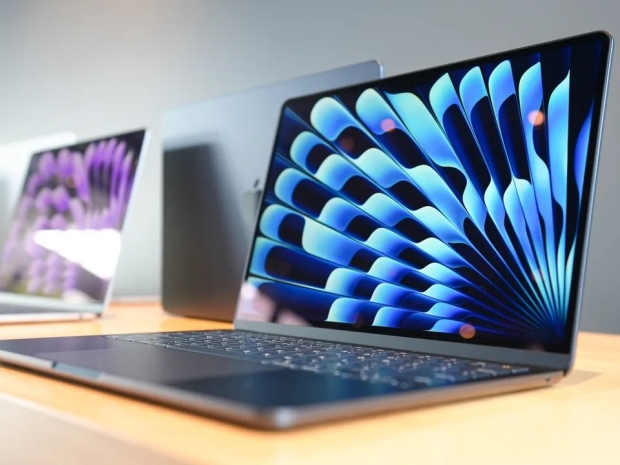It's déjà vu all over again. The guts of this 'brand-spanking-new' laptop are a spitting image of the old M2. Four screws, a couple of batteries stuck down with glue and a logic board that's hogging all the space up top.
Remember how the M2's SSD was slower than a snail on a go-slow? Apple has had a change of heart. The M3 has a quicker dual-chip SSD.
Apple's slapped on some U-shaped sticky stuff that will make battery removal slightly easier. But don't be fooled – it's still a fortress, with iFixit giving it a middling 5 out of 10 for repairability.
So, unless you're a whiz with a screwdriver, you will still have to go to the ironically titled Genius bar and pay a fortune to have it fixed.
iFixit has yet to give the brand-new MacBook a score for its repairability, but you can watch the complete teardown on YouTube to see the shiny internals of the laptop.
We’ve already given it a watch and noticed a couple of key takeaways from the dismantling.
The first thing noticed was that, unsurprisingly, the internals of the M3 MacBook Air are almost identical to the M2 MacBook Air, with vastly the same layout. That means four screws to open the bottom panel, a pair of battery units at the bottom held in with easy-to-access adhesive, and a logic board that houses the M3 chip and the rest of the computer gubbins dominating the top.
That logic board, however, hides one of the biggest changes (beyond the obvious M3 chip) to the new model—the SSD. In the 256GB M2 MacBook Air, it was quickly discovered that the SSD was slower than the storage in the M1 MacBook Air. This turned out to be because instead of the dual-chip SSD from the old model, Apple equipped the base model M2 machines with a single-chip SSD, making for speeds that were much slower than its predecessor.
Testing has shown that the SSD in the base 256GB M3 MacBook is back up to those dual-chip SSD speeds—and now iFixit’s teardown physically confirms it. One look at the logic board reveals the two chips of SSD storage.
How is the M3 MacBook Air looking as far as reparability? Apple has used a new U-shaped adhesive on the batteries, making them easier to remove, although little else has changed. Of course, watching the experts at iFixit take the laptop delicately apart with ease could make anyone think they can disassemble the computer. Apple fanboys with their legendary technical knowledge should let someone else better equipped to do it – like their cat.
iFixit has given it a preliminary score of 5 out of 10. That puts it up with the other “best” MacBooks, which is incredibly low. It will be tricky to get it apart, which is probably what Apple had in mind.




